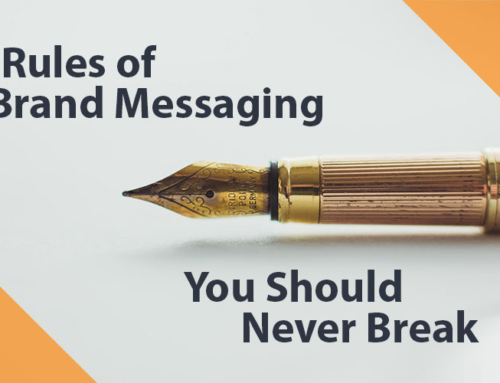Graphic design breathes life into marketing. That’s right, I said it. I’m a big girl. Like a lot of marketers, I’ve butted heads with designers over how to present marketing content, like how many words you can comfortably fit on a page. (A scant few versus All The Words.) But the truth is, design and marketing serve the same purpose: to make meaningful connections with a target audience.
When they work together, design and marketing make magic.
To understand how marketing can leverage the power of design (and vice versa), I spoke with branding and design expert Justin Kerr. Originally a graphic and web designer, Justin admits he got dragged kicking and screaming into marketing. After starting his own business, he realized that clients needed more than just visuals; they needed a deeper brand identity that worked seamlessly with their marketing.
Let’s talk about how that works.
The Role of Graphic Design in Marketing
Justin: You have a message you want to get it out to the world. You have a face, which is your visual brand. And you have a voice, the marketing channels you use to get that message heard. Good graphic design ensures that your brand shows up consistently and authentically across every touchpoint, always with an eye towards how you want to represent yourself to the world.
Essentially, you want people to have the same visceral experience wherever they encounter your company. That’s why design, like marketing, is a key component in getting people to know, like, and trust your brand. In some cases, it’s even more important. Why? Because of the way we’re wired as human beings. We respond to what we see.
- 90% of the information processed by the human brain is visual.
- People remember 80% of what they see, 10% of what they hear and 20% of what they read.
- When people hear information, they’ll remember only 10% of it three days later. But if a relevant image is paired with that same info, people retain up to 65% of the information.
Along with some good examples of consistent branding done well, check out the strong message and harmonious feel of Southwest’s latest rebrand:


“The Heart emblazoned on our aircraft, and within our new look, symbolizes our commitment that we’ll remain true to our core values as we set our sights on the future.” – Gary Kelly, Chairman, President, and CEO, Southwest Airlines
<Images & quote sourced from Lippincott: Global Brand & Innovation Consultancy>
Want a potential customer to remember your marketing? Draw them in with a visual hook, something on the screen or page that resonates with the viewer immediately. And make sure it’s communicated across your visual identity (logos, typography, color palettes, image libraries), advertising and marketing design (print and digital materials, presentations), and digital user interfaces (websites, apps, etc.).
As a writer I hate to admit it, but words alone don’t work. And crappily designed stuff is boring.
Form Follows Function
Justin: This is how I think: What’s the function of the piece? What’s the message? I let the form sit on top of that. Some designers just want to make their mark with a certain style. But that makes it easy to miss the point of the marketing, because it becomes more about the designer than the audience.
Design not only helps create customer affinity for a brand, it can even influence a potential buyer’s decision-making process. That’s why design and marketing must work hand-in-hand to reinforce the marketing message. And why designers have to design not for themselves, but for their audience.
“Good design is invisible. You don’t notice the design; what you notice is the message.”
Take Dieter Rams, who for 40 years created elegant, minimalist products for Braun. Among Rams’s 10 principles for good design is the notion that good design is as little design as possible. He continually removed superfluous aspects to make products simple, understandable, and beautiful.

L 2 speaker, 1958, by Dieter Rams for Braun
In addition to stripping away superfluous details, Justin deliberately plays off of any marketing content he’s given. “I’m looking at it and saying: what can I pull out of this that will visually communicate what’s written here?” Design needs to reinforce the message, including the content’s tone and feel. There’s a lot more to messaging than words.
In Justin’s clear and concise print materials below, the message shines through, not the design. The redesigned sheet on the right contains the same amount of information as the original on the left. But it makes the info much easier to digest, and the images tell a more compelling story of happy clients.

Here’s another example where the original “design” gets in the way of the content (left-hand version). Justin’s clean, elegant website redesign (on the right) stripped away unnecessary elements to let the content carry the message.

Two Sides of the Same Coin
Justin: When design is done in a vacuum, at best, you come away with something that’s aesthetically pleasing and works well in different formats. Basically, it doesn’t suck. Worst case, you waste a lot of time trying to create something someone is happy with, but it doesn’t actually fit their needs.
From a marketing perspective, the function of design is to draw people in and get them to listen to your message. From a design perspective, marketing informs the meaning and purpose of every visual element. To be effective, both must be united around a single idea.
Imagine Volkswagen’s “Think Small” campaign of 1960 without the striking image:

Or consider Fred Spear’s powerful “Enlist” poster, issued in 1915 after the sinking of the Lusitania by a German U-boat (resulting in thousands of civilian deaths):

Clever marketing campaigns don’t work just because they’re clever. Beautifully designed ads don’t work just because they’re aesthetically pleasing. Both design and marketing must work together to deliver a clear and compelling message to the people you most want to reach.
Ready to level up your marketing with impactful words and design? We’re here to help you make magic. Contact us today to talk about the story you want to tell.
Justin Kerr has more than 25 years of experience in print and web design, branding, identity development, art direction, and design strategy. He spent several years as the Creative Director for a web development company before starting my own design and branding agency, Justin Kerr Design, in 2016.








Leave A Comment